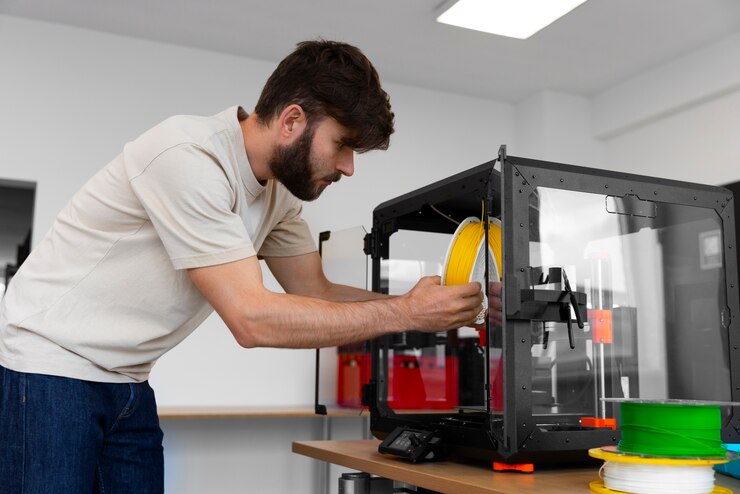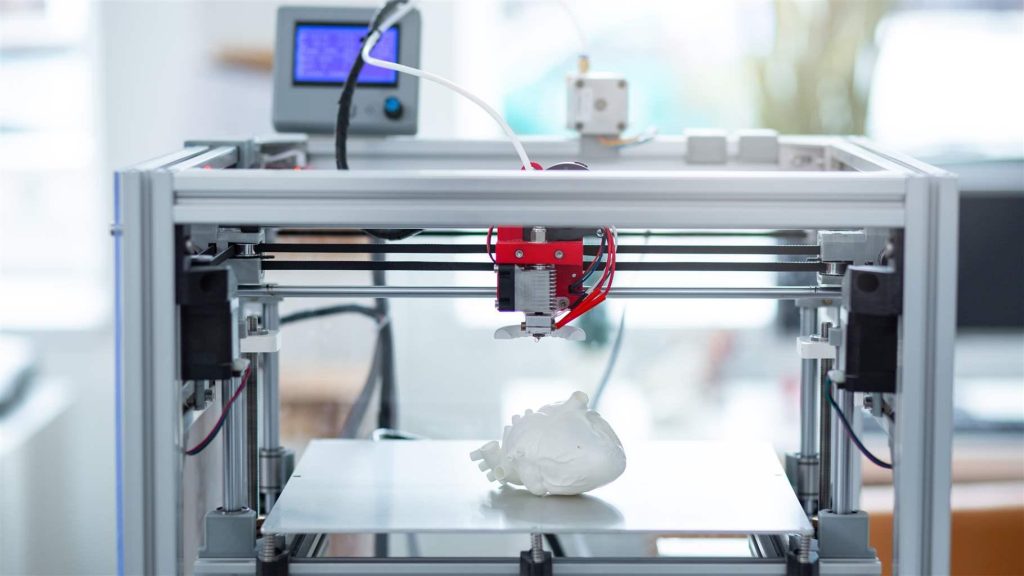The world of technology is ever-evolving, and one of the most exciting advancements in recent years is 3D printing. What was once considered a futuristic concept is now a rapidly growing industry, revolutionising how we create and innovate. From hobbyists and artists to engineers and medical professionals, the demand to buy 3D printers has skyrocketed, making this technology more accessible than ever before. Let’s delve into the fascinating world of 3D printing, exploring its origins, different types of 3D printers, and its diverse applications across various industries.
What is 3D Printing?
At its core, 3D printing, also known as additive manufacturing, is the process of creating a three-dimensional object from a digital file. Unlike traditional manufacturing methods that often involve cutting or hollowing out a piece of material, 3D printing builds objects layer by layer, which allows for creating complex designs and structures that would be otherwise impossible or cost-prohibitive to produce. This innovative process begins with a digital 3D model, which is then sliced into thin layers. These layers are sequentially printed and fused together, resulting in a tangible, three-dimensional object.
Types of 3D Printers

Source: freepik.com
When looking to buy 3D printers of excellent value, it is first crucial to understand the different types available, as each has its unique features and applications:
1.Fused Deposition Modeling (FDM)
FDM is one of the most popular and widely used types of 3D printers. It works by melting and extruding thermoplastic filament through a heated nozzle, which deposits the material layer by layer to build the object. FDM printers are known for their affordability and ease of use, making them a favourite among beginners and hobbyists.
2.Stereolithography (SLA)
SLA printers use a laser to cure liquid resin into hardened plastic. This process involves a vat of liquid resin that is selectively cured by a laser beam to form the layers of the object. SLA printers are known for their high precision and ability to produce detailed and smooth surface finishes, making them ideal for applications requiring intricate designs.
3.Selective Laser Sintering (SLS)
SLS printers utilise a high-powered laser to fuse small particles of powdered material, typically nylon, into a solid structure. The laser selectively sinters the powder layer by layer, resulting in a strong and durable final product. SLS printing is commonly used for producing functional prototypes and end-use parts, especially in industries like aerospace and automotive.
4.Digital Light Processing (DLP)
Similar to SLA, DLP printers use a light source to cure liquid resin. However, instead of a laser, DLP uses a digital projector screen to project the image of each layer, curing the entire layer at once. This results in faster print times and high-quality finishes, making DLP printers suitable for detailed and precise applications.
Materials Used in 3D Printing
The versatility of 3D printing is largely due to the wide range of materials that can be used. When you buy 3D printers, it’s essential to consider the types of materials compatible with the printer and the intended application:
- Plastics: Plastics are the most common materials used in 3D printing. Popular options include PLA (polylactic acid), ABS (acrylonitrile butadiene styrene), and PETG (polyethylene terephthalate glycol). Each type of plastic has its own set of properties, making them suitable for various applications from simple prototypes to functional parts.
- Resins: Resins are primarily used in SLA and DLP printers and are known for their ability to produce highly detailed and smooth prints. There are different types of resins, including standard, tough, flexible, and castable, each designed for specific uses such as dental models, jewellery casting, and engineering parts.
- Metals: Metal 3D printing involves the use of powdered metals such as stainless steel, titanium, and aluminium. This process, often referred to as metal additive manufacturing, is used for creating high-strength and durable parts for industries like aerospace, automotive, and medical.
- Composites: Composite materials combine two or more different materials to enhance specific properties. For instance, carbon fibre-reinforced polymers offer increased strength and reduced weight, making them ideal for applications requiring high performance and durability.
Common Applications of 3D Printing

Source: pewtrusts.org
The applications of 3D printers are vast and span across multiple industries, each benefiting from the unique advantages this technology offers.
Prototyping and Product Development
3D printing has revolutionised the prototyping process, allowing designers and engineers to quickly and cost-effectively create and test prototypes. This accelerates product development cycles and reduces the time to market.
Medical and Dental
In the medical field, 3D printing is used to create customised prosthetics, implants, and even organ models for surgical planning. Dentists utilise 3D printing to produce precise dental appliances, such as crowns, bridges, and aligners.
Aerospace and Automotive
The aerospace and automotive industries benefit from 3D printing by producing lightweight and high-performance parts. This technology allows for the creation of complex geometries that are not possible with traditional manufacturing methods.
Art and Fashion
Artists and fashion designers use 3D printing to bring their creative visions to life. From intricate jewellery and sculptures to avant-garde fashion pieces, 3D printing enables the production of unique and customised designs.
Conclusion
3D printing has truly transformed the landscape of manufacturing and design, offering unprecedented opportunities for innovation and creativity. Whether you’re a hobbyist, an entrepreneur, or an industry professional, the decision to buy 3D printers can open up a world of possibilities. By understanding these specific printers, the materials they use, and their wide range of applications, you can make an informed choice that suits your specific needs and goals. Embrace the future of creation and explore the endless potential of 3D printing today.

